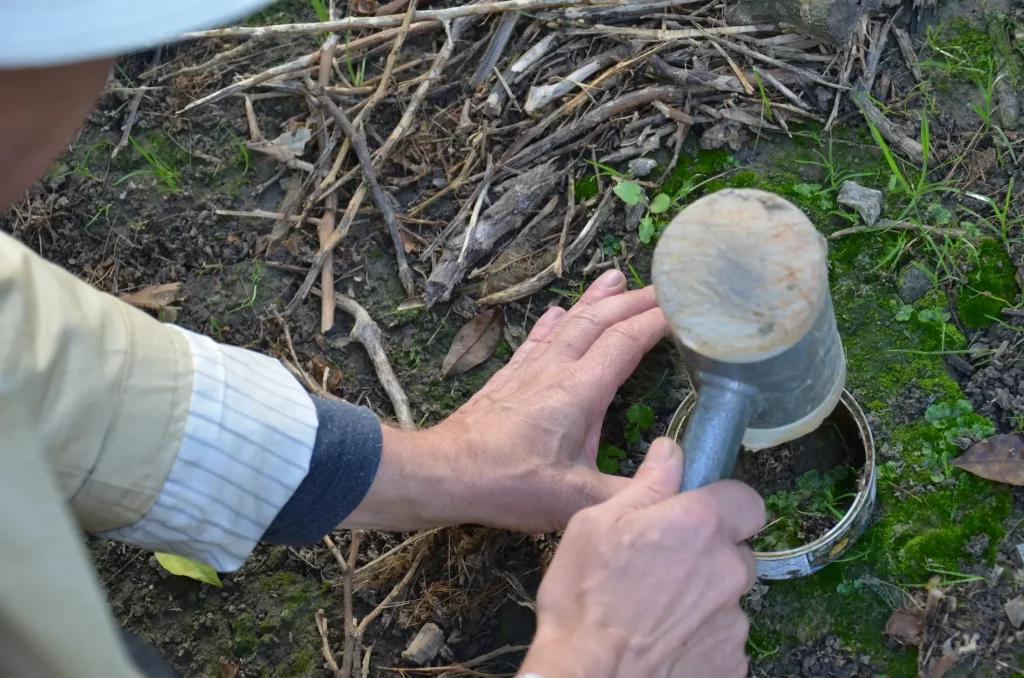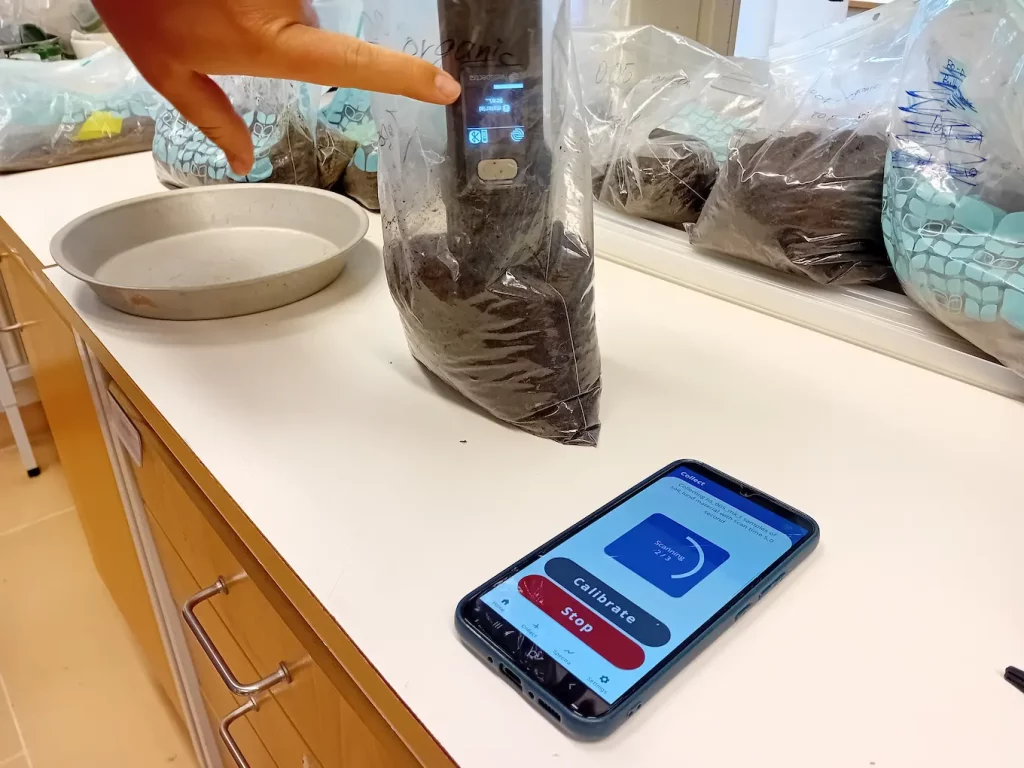Novel in-field soil sampling tools
Introduction
Finding new ways of measuring soil health
AI4SoilHealth is developing new ways of evaluating soil health to make it easier to understand and compare Europe’s soils. Find out why its important to improve the way we collect soil health data and how it can help Europe meet it’s soil strategy for 2030.
Why is finding the best soil sampling methods important for European soil health management?
Soils are a vital resource that underpins a plethora of natural and societal services. Over the past half century, the mechanisation and singular focus on plant production—food, fodder, and raw materials—supported by chemical fertilisers, have led to widespread soil degradation. This reductionist approach often overlooks other key soil functions, such as water purification, contaminant remediation, and carbon storage, which mitigate climate change. Current soil health observation largely focuses on physico-chemical properties, which can be temporarily boosted by chemical inputs but often neglect the biological and ecological functions vital to soil. To maintain soil’s multifaceted role in ecosystem health, we need indicators that can reflect the biological and ecological functions alongside physico-chemical ones and can be measured without reliance on specialist laboratories.
How is the AI4SoilHealth project working towards our goal?
In addition to improving current soil measurement tools, the AI4SoilHealth project is especially interested in building our understanding of the biological and ecological potential of soil. Scientists across Europe are testing five novel field observation methods to capture a wider understanding of what soil does in this area:
- Environmental DNA (eDNA) metabarcoding. This characterises the diversity and composition of soil microbial communities in the soil.
- Activity rates of key enzymes involved in the main biogeochemical cycles. This gives better predictions of biologically driven breakdown, reuse and availability of key soil nutrients.
- The ratio of soil fungi versus bacteria. This is an excellent indicator for the extent of disturbance in soil ecosystems.
- Aggregate stability. This has a large importance for working out erosion resistance, and the water and nutrient holding capacity of soil.
- Water infiltration capacity. This is a key measure relating to the soil water absorption, holding and release capacities.
While some methods, such as eDNA analysis, still require specialised labs, others are available for “Do-It-Yourself” (DIY) testing, empowering stakeholders to analyse soils directly in the field.
How could the improved in situ soil sampling methods developed by AI4SoilHealth change soil management in Europe?
The project also incorporates both traditional laboratory and DIY physico-chemical methods, like spectroscopy, soil penetrometers, and Ion Selective Electrodes for key measurements (e.g., pH, salinity), making testing more accessible to farmers, advisors, and citizen scientists. Data collected is mapped using satellite imagery and topographical data to generate actionable soil health maps. This means that farmers can adapt practices in real-time to optimise soil health and productivity, potentially reducing fertiliser use and fuel while enhancing long-term soil vitality.


How will the improved in situ soil sampling methods benefit soil managers—farmers, polluted site remediators, foresters, and policymakers?
Many of these novel methods, both the physico-chemical and the biological/ecological, will be supported by the smartphone app developed as part of AI4SoilHealth. We envision future farmers, agricultural advisors, extension workers and citizen scientists, with a bit of nerdiness for technology, to be able to survey, and manage, their soils in near real time. Then, the uploaded data will be merged with satellite imagery and information derived from topography and time series of satellites, and the app will return a map of the entire sampled field extrapolated from the sample points taken. With this app they will gain immediate insights into their soil conditions, enabling more efficient land management practices. This empowers farmers to make soil-driven decisions that enhance crop growth and reduce dependency on chemical inputs.
At the same time this data driven soil-health favouring management regime will also support other roles that soil has in our ecosystem. Functions that are increasingly recognised by the global society as a public good that must be paid for. This has already started with an escalating market for soil carbon credits. Farmers are already stepping into this market; with the AI4SoilHelath field methods they will be able to access this market more easily and they will be able to prove the climate benefits more accurately.
Examples that demonstrate the importance of new and improved soil sampling methods
In Europe, farmers face challenges such as soil compaction, nutrient runoff, and carbon sequestration demands. For example, a French vineyard owner might use these new in-field sampling methods to track the soil’s infiltration rate and adjust watering schedules to conserve water and reduce erosion risk. Similarly, a German agricultural cooperative could leverage enzyme activity measurements to monitor soil’s biological nutrient cycling and optimise organic input schedules. These examples illustrate how data-driven insights from improved soil sampling methods support sustainable, effective, and profitable soil management practices while contributing to broader environmental goals.


Find out more
Thomas Gumbricht from Stockholm University and Sonia Meller from Digit Soil discuss how by harnessing cutting-edge technologies we can transition towards sustainable soil management practices that not only enhance agricultural productivity but also preserve essential ecosystem services.

